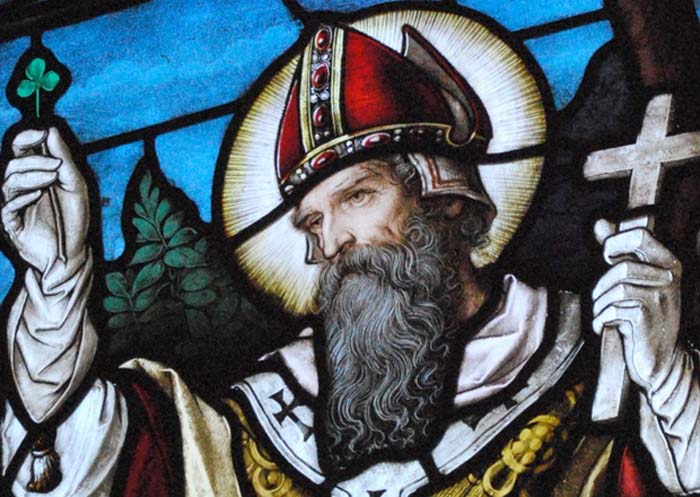17 March: Saint Patrick, Patron Saint of Ireland

From monk to evangelizer
Saint Patrick's real name was Maewyn Succat. Born around 385 in Scotland, he was the son of a Roman centurion from Great Britain.
When Maewyn was 16 years old, he was kidnapped by pirates and sold as a slave to a Druid in what is now Ulster, Ireland. During his six years of slavery, he worked as a shepherd for an Irish clan leader and discovered Christianity, becoming a practicing Christian.
In 409, he had a dream in which God commanded him to escape and reach a ship. Maewyn was able to flee and boarded a ship headed for England. Once he had returned home, he decided to dedicate himself to religious life and was ordained a priest.
A few years later, he moved to the Lérins islands near Cannes, France, where he settled in the monastery of Saint-Honorat and dedicated himself to theological studies for two years.
Pope Celestine I then instructed him to return to Ireland to evangelize the country and convert the Irish to Christianity. Saint Patrick accepted the mission and returned to Ireland in 411.
He met many influential leaders in Ireland, including King Aengus, to whom he tried to explain the concept of the Trinity (Father, Son, and Holy Spirit) by using the symbol of the shamrock. With its three petals, the shamrock was seen as a perfect metaphor for Christianity, an explanation that convinced King Aengus to convert. The shamrock then became the national symbol of Ireland.
The conversion of King Aengus was a key milestone in Saint Patrick's mission and in the Christianization of Ireland. According to legend, Saint Patrick drove all the snakes from the island, symbolizing the purification of Ireland from paganism and the spread of Christianity.
Saint Patrick was ordained a Bishop and took the name Patricius (Latin for Patrick). After many years of evangelization, he withdrew to Downpatrick, where he died on 17 March 461. At the time of his death, all of Ireland had been Christianized. Patrick had accomplished an extraordinary feat.





